Lao Food Dishes: Basic Overview
Common Ingredients
Common Cooking Methods
Courses
Meals
Key Taste
Eating Etiquette
Meal Presentation
Culinary Festivals
Influence and Fusion
Popular Types of Lao Dishes
-
Glutinous Rice Dishes
These dishes feature sticky rice as the main ingredient, often steamed and served as a staple or sweet treat in Laotian cuisine.
-
Noodle Soups
These soups combine rice noodles with rich broths, meats, and aromatic herbs.
-
Salads
Laotian salads are a blend of fresh ingredients, herbs, and often meats, dressed in flavorful sauces, offering a mix of textures and tastes.
-
Grilled and Barbecued Dishes
These items are meat or fish marinated and cooked over an open flame, imparting a smoky flavor.
-
Condiments and Sauces
Essential to Laotian cuisine, these range from spicy chili pastes to tangy dips, adding depth and complexity to dishes.
Laotian dishes are specialties consumed by the locals and belong to the national cuisine of the country, with many items featuring sticky rice as a staple option.
To add to that, locals use many local ingredients to adapt many dishes to the indigenous taste. People infuse intense heat into many Laotian delicacies using a wide range of chili peppers.
Furthermore, the surrounding nations like Thailand, Vietnam, and China influence the tastes and cooking methods of many specialties.
Each Lao delicacy comes with absolutely intriguing information about the ingredients, their origin, and popular accompaniments to improve the flavor.
Then, I suggest diving deeper into the history of traditional Lao foods and the differences between these specialties compared to Thai dishes.
Also, you should check out how the spice usage of Lao cooking varies differently depending on the region, along with some beverage options for parking with the dishes.
25 Popular Laotian Dishes with Filters
Just a small note, you should use the handy filter system to view these dishes in your favorite alphabetical order, tastes, key ingredients, dish types, cooking methods, and global popularity.
Plus, it’s essential for anyone to go through the styles of Laotian cuisine, featuring options like the most popular, national, national, traditional, and street food:
Khao Niao
- Street Food
- Traditional
Khao niao is Lao sticky rice, a traditional and essential diet of Lao people. Commonly, locals do not eat regular rice every day like most other Southeast Asians; instead, they eat sticky rice.
Glutinous rice for cooking sticky rice grown on the upland fields; therefore, it brings a beautiful ivory-white color with a chewy texture and fragrant aroma.
The sticky rice is then placed in a woven bamboo basket to keep it warm longer. They often serve khao niao with almost everything, grilled chicken, boiled vegetables, and jaew boong (a chili paste sauce).
Larb
- National
- Traditional
Larb is a traditional salad dish in Laotian festivals with the meaning of good luck. This salad is made from all kinds of meat, usually pork, beef, deer, buffalo, or fish.
Plus, the broth from boiling the meat is fully used by serving along with larb. Larb goes well with lettuce, cowpea, etc., to help increase the flavorful profile.
Furthermore, larb is a favorite item that locals pick to treat guests, which expresses their blessings to the visitor.
Tam Mak Houng
- Street Food
- Traditional
Tam mak houng is a favorite Laotian salad, known by the name som tam in Thailand. This flavorful salad consists of young papaya that is washed and grated into thin strips, along with eggplant and cowpea.
In Lao and neighboring countries, the papaya salad features another variation with the main component changed into shredded unripe mango, which is more sour.
People savor sticky rice or beer with papaya salad for the best experience. Surprisingly, there’s also a version of papaya salad where the spiciness is opted for a sweeter flavor.
Naem Khao
- Street Food
- Traditional
Naem khao is a popular Laotian appetizer of rice salad, originating from Tha Deua (a small village in Vientiane). It’s also known by other names like naem khluk or yam naem.
The crispy rice salad includes mixed sliced onions, peanuts, herbs, and some slices of som moo (fermented pork sausage). The idea is to serve nam khao over a lettuce leaf to enjoy the fresh and crispy profile.
Khao Piak Sen
- Traditional
Khao piak sen is a rice noodle soup specialty of Laos, often served as a breakfast item. The soup has a light broth made from chicken or pork bones and is infused with aromatic spices like galangal, kaffir lime leaves, and lemongrass.
As for the noodles, they possess a chewy consistency, allowing them to withstand high temperatures. Vendors typically cook these noodles directly in the broth, which releases the starch from the noodles, enriching the broth’s texture.
Khao Poon
- National
- Traditional
Khao poon is a traditional spicy Lao rice vermicelli soup made with chicken, fish, or pork. The soup is also seasoned with fish sauce, padaek (Lao fish sauce), lime leaves, galangal, garlic, shallots, chilies, and fish mint.
This traditionally royal soup traces its origins to Java and boasts influences from Chinese, Indian, Khmer, Dutch, and French cuisines.
Often referred to as the Lao royal vermicelli curry soup, khao poon’s vibrant red and golden hues symbolize the Lao royal family diet.
Ping Gai
- Street Food
- Traditional
Ping gai is a Lao-style grilled chicken that traditionally uses free-range chickens for their firm texture and subtle sweetness. Plus, these chickens also boast a unique rustic aroma.
This Laotian grilled chicken is paired with khao niaw sticky rice and the spicy jeow bong dipping sauce to enhance the flavor.
Lao Sausage
- Street Food
- Traditional
Lao sausage is a traditional delicacy made from coarsely chopped fatty pork or water buffalo, seasoned with a blend of herbs and spices.
Originating from Luang Prabang, this sausage has become a popular street food not only in Laos but also in Northern and Northeastern Thailand.
There are two primary variations of Lao sausage; the sai oua moo, which is made from pork, and sai oua kwai, crafted from water buffalo.
Ping Pa
- Street Food
- Traditional
Ping Pa is a Lao-style grilled fish, especially sought-after in Vientiane. Available at markets and eateries as a traditional Lao fish specialty, these grilled fish are seasoned with local spices, and often paired with sticky rice.
Grilled to a golden hue, its aroma is enjoyed with an added kick of jaew bong, a sweet and spicy sauce. Snapper or other white-fleshed fish is the preferred choice.
Before grilling, the fish is salted, and its belly stuffed with a fragrant mix of lemongrass, lime leaves, garlic, chives, galangal, fish sauce, and lemon juice, ensuring any fishiness is masked.
Mok Pa
- Traditional
Mok Pa is a traditional steamed fish dish of Laotian cuisine that is usually wrapped in banana leaves and tied with a bamboo string before cooking. In Laos, locals enjoy catfish the most for making mok pa.
The steamed fish dish is best savored with sticky rice with a whole banana leaf as decoration. The softness and sweetness of sticky rice pair well with the sweet, milky white fish flesh.
Khao Niew Ma Muang
- Traditional
Khao niew ma muang is a traditional duo of sticky rice and mango dishes in Laos. The sweet treat is also a popular street food in the country.
The sticky rice offers a soft and chewy bite when prepared with creamy and aromatic coconut milk. Paired with fresh mango, the fruit’s subtle tanginess and sweetness elevate the overall balance of flavors.
Khao Nom Kok
- Traditional
Khao nom kok is a delightful sweet treat from Laos coming from Luang Prabang. Unlike typical sponge cakes, these delicacies are made from a sweetened batter to enjoy as snacks.
Widely available at Lao night markets, vendors bake these cakes in half-moon mini trays over charcoal braziers for a perfect amber crust.
For an enhanced taste, pair these treats with coffee, allowing their flavors to complement each other beautifully.
Pa Thong Ko
- Street Food
Pa thong ko is a Lao snack with a crispy outer and a soft interior. Known as khao nom kok, which translates to “rice dessert ball”, it’s typically molded into petite balls or twisted strips.
This crispy fried dough treat is relished plain, dipped in accompaniments like pandan custard, condensed milk, chocolate, or coconut jam, or even sprinkled with sugar or sesame seeds.
Often featured as a popular breakfast in Laos, pa thong ko appears at many festivals, weddings, and celebrations.
Kanom Tuay
- Traditional
Kanom tuay is a traditional coconut milk cake dessert of Lao, also known by names such as kanom thuai and khanom thuay. This coconut delicacy employs a tapioca batter for steaming in a specialized metal tray.
For added vibrancy, bright green pandan juice is infused into the gelatinous mixture. Toppings typically include yellowish soybeans, grated coconut, or coconut cream.
Jeow Bong
- Traditional
Jeow bong is referred to as the traditional Luang Prabang chili paste originating from Luang Prabang.
This iconic chili sauce brings together a blend of savory, sweet, and spicy profiles crafted from galangal, garlic, fish sauce, and indispensable sun-dried chilies.
While the sauce varies depending on the ingredients used, adding shredded water buffalo or pork skin is a favored choice.
Khao Soi
- Traditional
Khao soi is a traditional dish of rice noodles in soup, created by the Chin Haw people of Laos and northern Thailand.
It’s believed that this bold noodle dish first emerged in the regions of Luang Namtha and Luang Prabang.
Distinct from its Thai or Burmese counterparts, Laos khao soi features a clear broth accompanied by a tomato meat sauce and is crafted with hand-sliced rice noodles.
Khao Lam
- Traditional
Khao lam is a Lao dessert consisting of sticky rice cooked in bamboo. Made with either white or purple sticky rice, it’s enriched with coconut cream along with beans, taro, or sweet potato.
Frequently paired with ping gai, khao lam is a common sight at roadside stalls throughout the country.
Keng No Mai
- Traditional
Keng no mai is a traditional Lao soup, richly flavored with bamboo shoots, mushrooms, okra, pumpkin, yanang leaf extract, and padaek. The soup is often thickened with sticky rice flour for added texture.
In addition, keng no mai goes well with ingredients like quail eggs, eggplant, climbing wattle, and kajeng. Surprisingly, the bamboo shoot soup was a part of the royal menu in Lao.
Or Lam
- Traditional
Or lam is a traditional Laotian stew of Luang Prabang, favorite by many across the country for its peppery and thick broth.
Often, the stew comes with a medley of ingredients, including lemongrass, chilies, Laos chili wood, sticky rice, citronella, garlic, dill, and onions.
In terms of meats, or lam adapts well with buffalo, beef, and game meat. Historically, the royal recipe from Luang Prabang favored deer meat as the primary ingredient.
Jaew Mak Len
- Traditional
Jaew Mak Len is a tomato dipping sauce of Laos renowned for its spicy, sour, and smoky flavors.
Traditionally paired with grilled or fried meat, sticky rice, and fresh vegetables, its preparation involves grilling tomatoes, chilies, garlic, shallots, and green onions until they’re charred.
These ingredients are then mashed using a mortar and pestle or a food processor. The sauce is seasoned with fish sauce, salt, and cilantro, resulting in a complex taste and fragrance.
Jaew mak len has a slight crunchiness, achieved by adding toasted rice powder and chili flakes.
Khao Piak
- Traditional
Khao piak is a comforting congee, traditionally made by simmering rice in chicken broth or water. Once cooked to a creamy consistency, locals garnish congee with fried garlic, scallions, and pepper.
To enhance its flavor and texture, congee is served with chicken, quail eggs, century eggs, or youtiao (fried dough sticks). In Laos, congee is a favored breakfast choice, especially during the colder seasons
Kaipen
- Traditional
Kaipen is a Laotian traditional snack crafted from green algae, garlic, vegetables, and sesame seeds. Harvested from river bottoms in northern Laos, the algae is shaped into cubes and seasoned with olives and tamarind.
It’s then dried on reed mats under the sun, adorned with toppings like garlic, tomato, and onion. Kaipen is good for savoring on its own or used to enhance other dishes, typically after a quick flash-fry.
With a unique blend of sweet, bitter, and aromatic flavors, kaipen is not only a treat but also a source of essential nutrients.
Sien Savanh
- Traditional
Sien Savanh is a Laotian snack, created using dried and fried beef strips, though sometimes water buffalo meat is used as a substitute.
Perfectly paired with beer, sien savanh is great as a standalone snack or accompanied by sticky rice and jaew maak len, a tomato-based chili dip.
Tom Jeud
- Traditional
Tom jeud is a traditional Lao soup characterized by its clear broth, meat, vegetables, and rice. This mild, non-spicy dish goes well with various proteins, including pork, chicken, or fish.
Also, locals use many flavor enhancers such as garlic, ginger, cilantro, and fish sauce. As a staple, tom jeud is savored for breakfast or as a light meal with rice.
Khao Jee
- Street Food
Khao Jee is a traditional technique of grilling sticky rice on a stick over an open flame in Laos. One of the popular variants is khao jee joom kai, which involves the grilled sticky rice being dipped in egg.
The treat is also savored plain, sprinkled with salt, or accompanied by padaek, an ingredient that’s an essential part of food history in Lao.
What Is The History of Lao Dishes?
Lao dishes have a history revolving around their neighboring countries, trades, and colonization period. Lao delicacies are primarily shaped by neighboring countries like Thailand, Cambodia, and Vietnam, but it has also maintained a distinct identity.
A significant influence on Lao cuisine is its impact on the Northeastern region of Thailand. However, there are a few tweaks that differentiate the delights of these two countries.
Furthermore, Indian and Chinese cultures have deeply influenced Lao food. The spread of Hinduism, Buddhism, and Islam introduced spices, curry, and coconut milk.
The Columbian exchange introduced crops like tomatoes, papayas, and chili peppers to Southeast Asia. These ingredients, now central to Lao dishes, added depth to the cuisine.
Central to Lao culinary traditions is sticky rice, a symbol of national identity. Additionally, Laos’ diverse landscapes have led to regional variations in its cuisine. The North favors bitter flavors, while the South often uses coconut milk.
While the history of Lao foods is deeply intertwined with its neighboring countries and global influences, it’s essential to understand how its culinary traditions stand apart, especially when compared to the renowned Thai dishes.
How Are Lao Specialties Different from Thai Dishes?
Lao and Thai dishes, both rich and flavorful, have distinct characteristics despite their shared cultural influences. Here are the features to take note of:
Lao Cuisine
Thai Cuisine
Once you’ve got the hang of differentiating Laotian and Thai dishes, make sure not to miss how each region of Laos makes use of its spices.
How Does The Use of Spices Differ Between Regions in Laos?
Lao cuisine, with its diverse regional variations, uses a range of spices and ingredients that differ between the regions of Northern, Central, and Southern of Laos.
| Region | Characteristics |
|---|---|
| Northern Laos | Influenced by mountainous terrain and cooler climate, focusing on subtle use of spices, herbs, and fresh ingredients. |
| Central Laos | Showcases a blend of traditional Lao flavors with influences from neighboring countries, with moderate use of spices. |
| Southern Laos | Known for bold and spicy flavors, with a noticeable influence from neighboring Thailand and Cambodia, and pronounced use of chilies. |
Typically, the usage of these spices also depends on the sellers and vendors, with many Lao dishes often characterized by a certain spiciness and an umami profile. Now, let’s take your meal to another notch with the pairing of dishes with beverages from Laos.
What Laos Dishes to Have with Beverages?
In case you’re looking to enhance your experience with Laos food, pairing the dishes with refreshing drinks of Laos is a great place to start:
Don’t forget to spread these Laotian dishes with more people around you, making these specialties no longer strange to many.


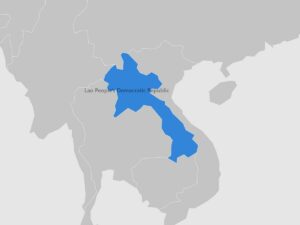
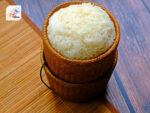
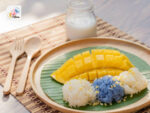

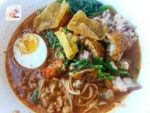
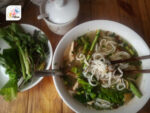
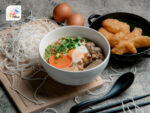
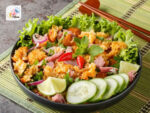
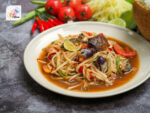
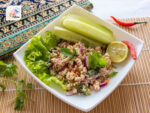
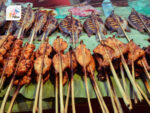
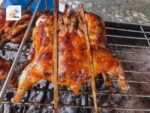
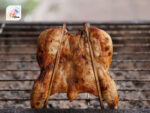
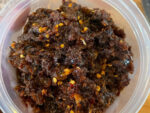

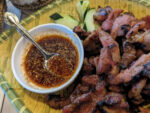
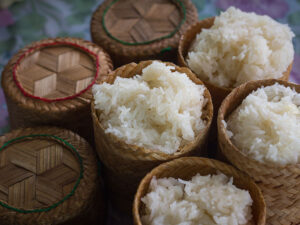
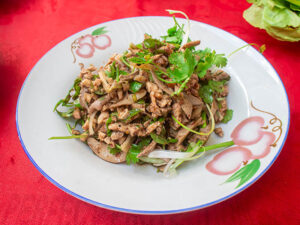
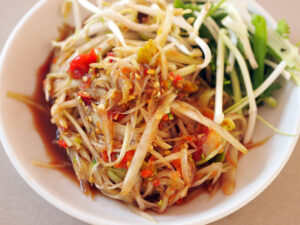
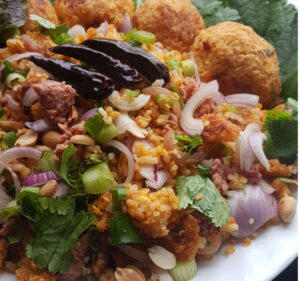
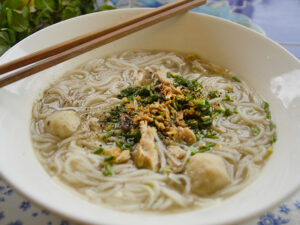
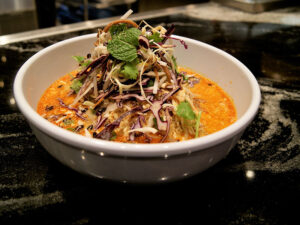
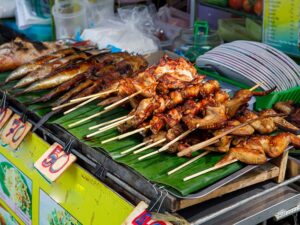
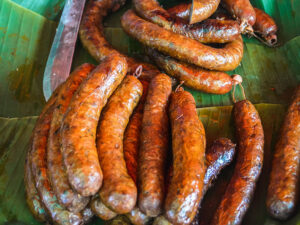
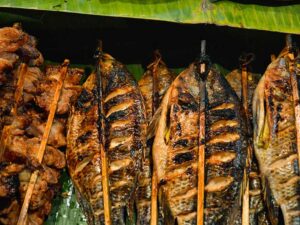
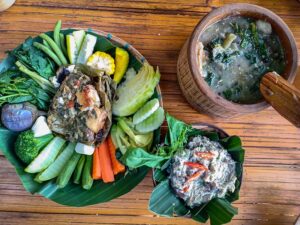
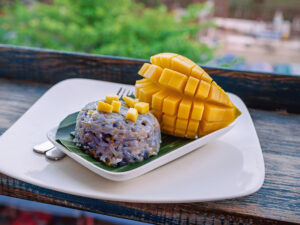
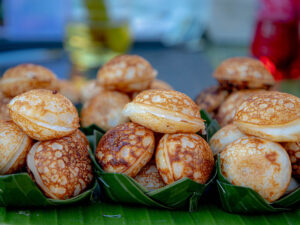
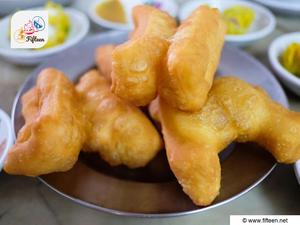
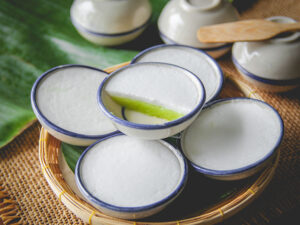
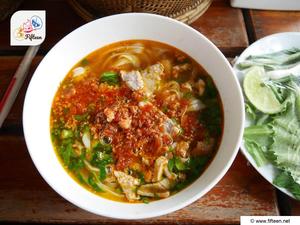
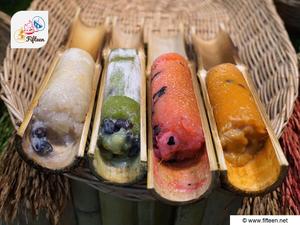
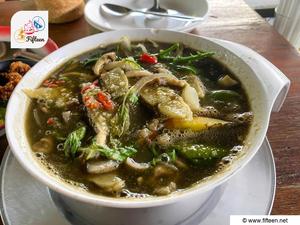
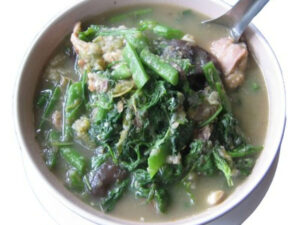
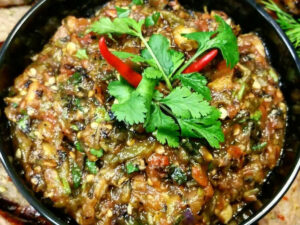
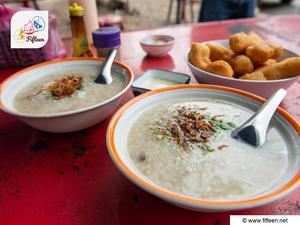
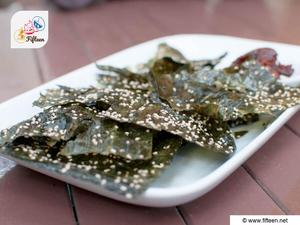
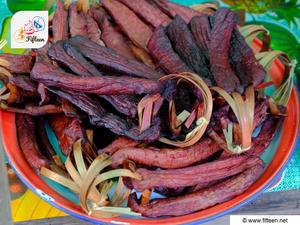
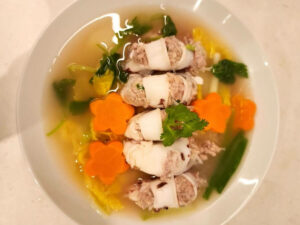
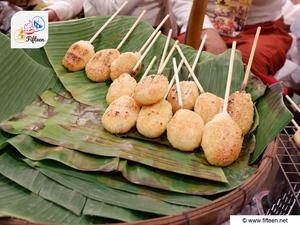
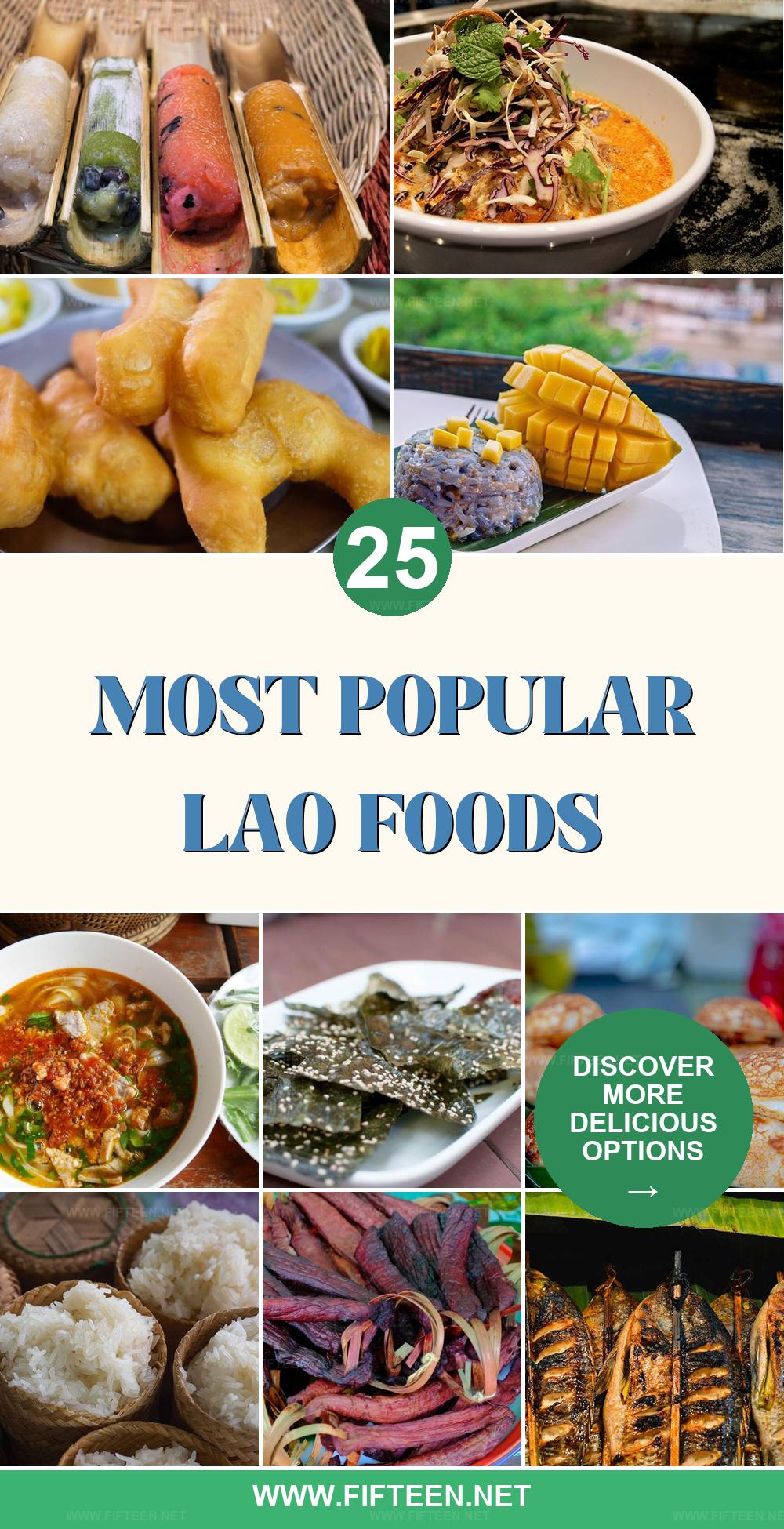
Jamie Scott
Editor in Chief, Senior Content Writer
Expertise
Home Cooking, Meal Planning, Recipe Development, Baking and Pastry, Food Editor, Cooking-video Maker, Western Food Evaluation Expert
Education
Le Cordon Bleu College of Culinary Arts
Local Community College, New York, NY
Jamie Scott is a skilled culinary expert and content creator specializing in Western cuisine. With over 15 years in the culinary field and formal training from Le Cordon Bleu, Paris, Jamie deeply understands how to blend nutrition with delicious flavors. His passion for cooking matches his commitment to making healthy eating accessible and enjoyable.
On Fifteen.net, Jamie brings a fresh perspective to classic dishes and beverages, offering readers insightful recipes, cooking tips, and a fresh view on meal planning that emphasizes taste, health, and simplicity.